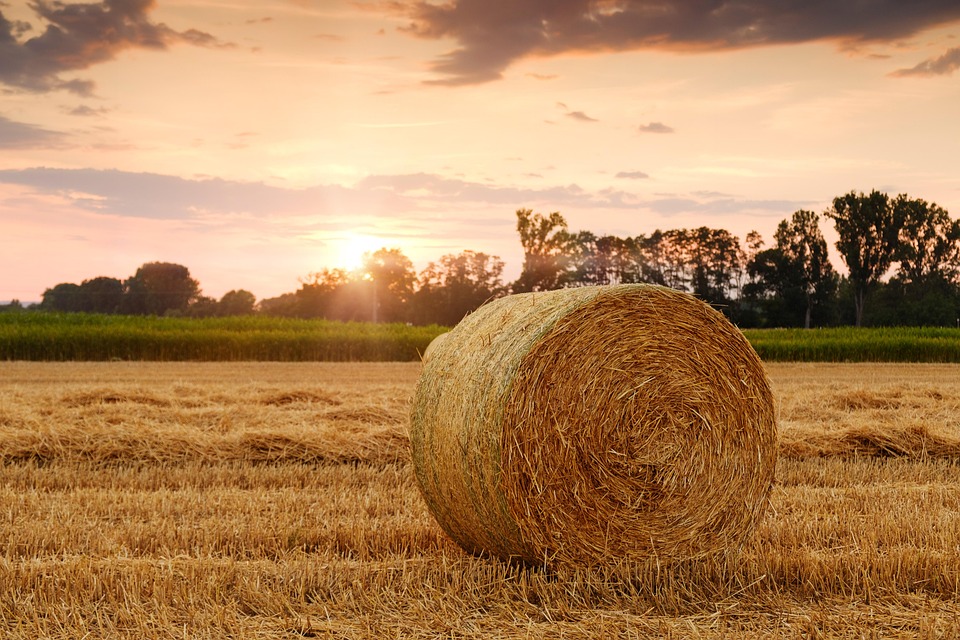# Sowing Seeds of Change: Engaging Headlines for Sustainable Farming Practices
Picture this: a vibrant garden under the expansive blue sky, where every seed tells a story, and each plant thrives in harmony with the earth. Amid the delightful chaos of colors and scents, the hum of bees dances through the air. This isn’t just a distant dream—it’s a lifestyle rooted in sustainable farming practices that foster a symbiotic relationship with nature. With an eagerness to share, let’s explore some engaging ideas and practices that can inspire everyone to embrace sustainable farming.
## 1. The Humble Beginnings: What Makes Sustainable Farming Unique?
Sustainable farming is all about harmonizing agricultural production with environmental stewardship. It’s a holistic approach that places equal value on the soil, crops, livestock, and the community. By prioritizing ecological balance, sustainable farming practices don’t just yield crops; they ensure a healthier planet for future generations.
Key elements of sustainable farming include:
– **Crop Diversity**: Growing various crops to promote biodiversity, reduce pest outbreaks, and improve soil health.
– **Organic Fertilization**: Using compost, cover crops, and crop rotation to enhance soil quality without synthetic chemicals.
– **Water Conservation**: Implementing eco-friendly irrigation practices to ensure every drop is used efficiently.
– **Permaculture Principles**: Designing the farming landscape to mimic natural ecosystems, enhancing productivity while minimizing waste.
## 2. Engaging Headlines for Inspiration
Here are some catchy headlines to captivate readers interested in sustainable farming practices:
### “Roots That Nourish: Exploring the Magic of Crop Rotation”
Delve into how rotating crops not only prevents soil depletion but also boosts yields, promoting a thriving garden year after year.
### “Bees, Butterflies, and Biodiversity: Attracting Pollinators to Your Farm”
Discover the crucial role of pollinators and how to create an inviting environment for these essential allies.
### “From Waste to Wealth: The Art of Composting for Beginners”
Learn the ins and outs of composting, turning kitchen scraps into black gold for your plants.
### “The No-Till Revolution: Why It’s Time to Stop Turning Over the Soil”
Explore the benefits of no-till farming, highlighting how it enhances soil health and reduces erosion.
### “Gardening with the Seasons: Year-Round Strategies for Sustainable Harvesting”
Find out how to adapt your gardening techniques throughout the seasons to reap the benefits of fresh produce all year long.
### “Greenhouses: The Secret to a Sustainable Garden Sanctuary”
Uncover the potential of greenhouses in extending growing seasons while protecting your plants from extreme weather conditions.
### “Water Wise: Sustainable Irrigation Techniques for Every Garden”
A practical guide to efficient watering methods that conserve water while keeping your garden lush.
### “Edible Landscaping: Thrive and Nourish with Beauty”
Learn how to incorporate edible plants into your landscaping, turning your outdoor space into a feast for the senses.
### “The Power of Permaculture: Designing Your Self-Sustaining Oasis”
Dive into the principles of permaculture and how to transform your land into a productive, harmonious ecosystem.
### “Truths of Vertical Gardening: Growing Upwards for Sustainability”
Explore the world of vertical gardening and how it can save space while maximizing food production.
## 3. Pro Tips for Thriving Sustainable Gardens
While the world of sustainable farming is rich and diverse, a few proven strategies can elevate any garden:
### 1. **Start Small**
Don’t overwhelm yourself. Begin with a small plot or a few pots, and as you get the hang of sustainable practices, expand gradually.
### 2. **Get to Know Your Soil**
Understanding your soil type and structure can significantly enhance your garden’s productivity. Conduct a simple soil test to assess its pH and nutrient levels.
### 3. **Embrace Native Plants**
Incorporating native plants in your garden leads to less water usage and attracts local wildlife, supporting the ecosystem.
### 4. **Utilize Companion Planting**
Certain plants thrive when grown together. For example, pairing tomatoes with basil not only increases productivity but also helps in pest control.
### 5. **Invest in Rainwater Harvesting**
Collecting rainwater can be a game-changer for irrigation, ensuring water availability while reducing your water bill.
### 6. **Stay Educated**
The world of sustainable farming is ever-evolving. Participate in local workshops, follow credible blogs, or join gardening clubs to stay updated and inspired.
## 4. Bringing It to Life: Real-Life Applications
Consider an example of a typical home garden. By rotating crops annually—growing legumes one year and leafy greens the next—you can naturally rejuvenate the soil and keep pests at bay. Additionally, instead of traditional row planting, experimenting with companion planting brings forth a flourishing garden while minimizing competition and maximizing growth.
Moreover, imagine creating a small compost bin in your kitchen. It’s incredible how kitchen scraps—from vegetable peels to coffee grounds—can gradually transform into nutrient-rich compost, nurturing your garden without reliance on store-bought fertilizers. The entire process symbolizes the cycle of life, where waste becomes a vital resource.
## 5. The Community Connection: Engaging with Local Farmers
Building a community around sustainable farming practices can amplify your efforts. Join or create local cooperatives where members share resources, seeds, and knowledge. Attend farmer’s markets not just to buy fresh produce but also to learn about what’s growing in your region and how others practice sustainability. Engagement creates a sense of camaraderie and deepens appreciation for sustainable living.
## 6. Final Thoughts on Sustainable Farming
The journey toward sustainable farming is more than just a trend; it forms a lifestyle rooted in respect for the earth and community. With engaging headlines to inspire readers, practical tips to employ, and a community to lean on, anyone can cultivate a fruitful garden that contributes to ecological balance.
Remember, every plant you nurture is a step toward making the world a better place. Whether you have a sprawling farm or a tiny balcony, every bit of greenery counts. So roll up those sleeves, get your hands dirty, and sow the seeds for a sustainable future—one garden at a time!



